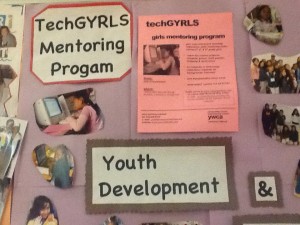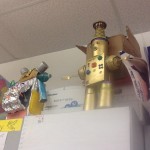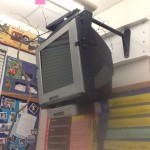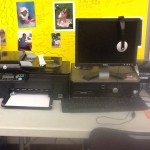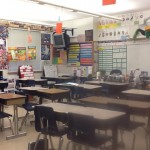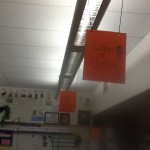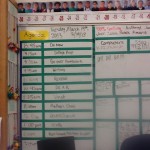To further develop the Square1 set of single task dedicated devices in close collaboration with teachers and learners, connections to public schools in the Bay Area were established through the after school mentoring program techGyrls organized by the YWCA Berkeley/Oakland, an NGO that organizes classes and programs around Berkeley and Oakland.
Presenting themselves as “big sisters” four to five mentors engage 15-20 girls in 1,5 hour long digital technology projects, such as creating their own calculators. The sessions happen once a week in two Oakland public schools. The girls are in 4th and 5th grade and generally face socio-economic challenges at home.
By involving the girls in hands-on digital making projects, the techGyrls mentor program is aimed at empowering the self-esteem and confidence of young female students. The program tries to show that the girls could strive to become scientists, designers and developers of technology. Listening to and discussing everyday challenges of the girls is as much part of the program as hands-on technology related activities.
Jana Hiraga, the coordinator of the techGyrls program, was excited about the Square1 concept, and offered me to plan two Participatory Design (PD) sessions with the girls around the design of Square1. To ensure that the PD sessions would inform the further development and design research of Square1 as well as meet the expectations of a techGylrs session, I was invited to observe a mentoring session in one of the participating schools.
Together with Jana and 4 additional mentors, I visited an Oakland public school (see images above) for observations to better understand the nature of the techGyrls program and to based the planning of participatory design sessions in context of the techGyrls program on these experiences. The session focussed on unequal income opportunities between male and female professionals in technology related position.
The technology available in the classroom includes a television mounted to the ceiling and four working computer stations including printers. Most of the techGylrs girls own personal mobile phones, but not many own computers, including tablet devices. The school does not provide netbooks or similar tools to the students. The classroom is decorated with previous art projects, such as models of the solar system, planets and cardboard robots. American history, e.g. cards of previous presidents, personal pictures of teachers and students, grammar charts and mathematical formulas are also displayed on the walls. It is interesting to note that charts with labels such as “College of Education” or “College of Medicine” were hanging from the ceiling, visually supporting the building of a future plan to attend college after school.

